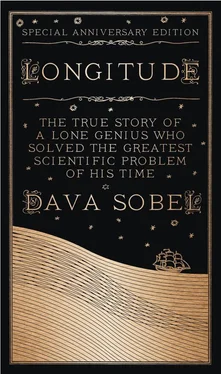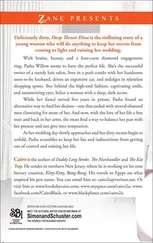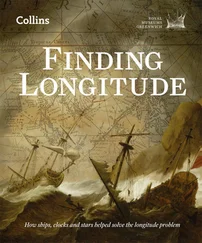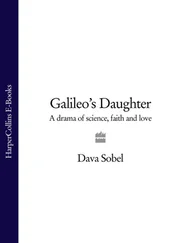Beyond this potential for human suffering, the global ignorance of longitude wreaked economic havoc on the grandest scale. It confined oceangoing vessels to a few narrow shipping lanes that promised safe passage. Forced to navigate by latitude alone, whaling ships, merchant ships, warships, and pirate ships all clustered along well-trafficked routes, where they fell prey to one another. In 1592, for example, a squadron of six English men-of-war coasted off the Azores, lying in ambush for Spanish traders heading back from the Caribbean. The Madre de Deus , an enormous Portuguese galleon returning from India, sailed into their web. Despite her thirty-two brass guns, the Madre de Deus lost the brief battle, and Portugal lost a princely cargo. Under the ship’s hatches lay chests of gold and silver coins, pearls, diamonds, amber, musk, tapestries, calico, and ebony. The spices had to be counted by the ton—more than four hundred tons of pepper, forty-five of cloves, thirty-five of cinnamon, and three each of mace and nutmeg. The Madre de Deus proved herself a prize worth half a million pounds sterling—or approximately half the net value of the entire English Exchequer at that date.
By the end of the seventeenth century, nearly three hundred ships a year sailed between the British Isles and the West Indies to ply the Jamaica trade. Since the sacrifice of a single one of these cargo vessels caused terrible losses, merchants yearned to avoid the inevitable. They wished to discover secret routes—and that meant discovering a means to determine longitude.
The pathetic state of navigation alarmed Samuel Pepys, who served for a time as an official of the Royal Navy. Commenting on his 1683 voyage to Tangiers, Pepys wrote: “It is most plain, from the confusion all these people are in, how to make good their reckonings, even each man’s with itself, and the nonsensical arguments they would make use of to do it, and disorder they are in about it, that it is by God’s Almighty Providence and great chance, and the wideness of the sea, that there are not a great many more misfortunes and ill chances in navigation than there are.”
That passage appeared prescient when the disastrous wreck on the Scillies scuttled four warships. The 1707 incident, so close to the shipping centers of England, catapulted the longitude question into the forefront of national affairs. The sudden loss of so many lives, so many ships, and so much honor all at once, on top of centuries of previous privation, underscored the folly of ocean navigation without a means for finding longitude. The souls of Sir Clowdisley’s lost sailors—another two thousand martyrs to the cause—precipitated the famed Longitude Act of 1714, in which Parliament promised a prize of £20,000 for a solution to the longitude problem.
In 1736, an unknown clockmaker named John Harrison carried a promising possibility on a trial voyage to Lisbon aboard H.M.S. Centurion . The ship’s officers saw firsthand how Harrison’s clock could improve their reckoning. Indeed, they thanked Harrison when his newfangled contraption showed them to be about sixty miles off course on the way home to London.
By September 1740, however, when the Centurion set sail for the South Pacific under the command of Commodore George Anson, the longitude clock stood on terra firma in Harrison’s house at Red Lion Square. There the inventor, having already completed an improved second version of it, was hard at work on a third with further refinements. But such devices were not yet generally accepted, and would not become generally available for another fifty years. So Anson’s squadron took the Atlantic the old-fashioned way, on the strength of latitude readings, dead reckoning, and good seamanship. The fleet reached Patagonia intact, after an unusually long crossing, but then a grand tragedy unfolded, founded on the loss of their longitude at sea.
On March 7, 1741, with the holds already stinking of scurvy, Anson sailed the Centurion through the Straits Le Maire, from the Atlantic into the Pacific Ocean. As he rounded the tip of Cape Horn, a storm blew up from the west. It shredded the sails and pitched the ship so violently that men who lost their holds were dashed to death. The storm abated from time to time only to regather its strength, and punished the Centurion for fifty-eight days without mercy. The winds carried rain, sleet, and snow. And scurvy all the while whittled away at the crew, killing six to ten men every day.
Anson held west against this onslaught, more or less along the parallel at sixty degrees south latitude, until he figured he had gone a full two hundred miles westward, beyond Tierra del Fuego. The other five ships of his squadron had been separated from the Centurion in the storm, and some of them were lost forever.
On the first moonlit night he had seen in two months, Anson at last anticipated calm waters, and steered north for the earthly paradise called Juan Fernandez Island. There he knew he would find fresh water for his men, to soothe the dying and sustain the living. Until then, they would have to survive on hope alone, for several days of sailing on the vast Pacific still separated them from the island oasis. But as the haze cleared, Anson sighted land right away, dead ahead. It was Cape Noir, at the western edge of Tierra del Fuego.
How could this have happened? Had they been sailing in reverse?
The fierce currents had thwarted Anson. All the time he thought he was gaining westward, he had been virtually treading water. So he had no choice but to head west again , then north toward salvation. He knew that if he failed, and if the sailors continued dying at the same rate, there wouldn’t be enough hands left to man the rigging.
According to the ship’s log, on May 24, 1741, Anson at last delivered the Centurion to the latitude of Juan Fernandez Island, at thirty-five degrees south. All that remained to do was to run down the parallel to make harbor. But which way should he go? Did the island lie to the east or to the west of the Centurion’s present position?
That was anybody’s guess.
Anson guessed west, and so headed in that direction. Four more desperate days at sea, however, stripped him of the courage of his conviction, and he turned the ship around.
Forty-eight hours after the Centurion began beating east along the thirty-fifth parallel, land was sighted! But it showed itself to be the impermeable, Spanish-ruled, mountain-walled coast of Chile. This jolt required a one-hundred-eighty-degree change in direction, and in Anson’s thinking. He was forced to confess that he had probably been within hours of Juan Fernandez Island when he abandoned west for east. Once again, the ship had to retrace her course.
On June 9, 1741, the Centurion dropped anchor at last at Juan Fernandez. The two weeks of zigzag searching for the island had cost Anson an additional eighty lives. Although he was an able navigator who could keep his ship at her proper depth and protect his crew from mass drowning, his delays had given scurvy the upper hand. Anson helped carry the hammocks of sick sailors ashore, then watched helplessly as the scourge picked off his men one by one … by one by one, until more than half of the original five hundred were dead and gone.
3. Adrift in a Clockwork Universe
One night I dreamed I was locked in my Father’s watch
With Ptolemy and twenty-one ruby stars Mounted on spheres and the Primum Mobile Coiled and gleaming to the end of space And the notched spheres eating each other’s rinds To the last tooth of time, and the case closed .
—JOHN CIARDI, “My Father’s Watch”
As Admiral Shovell and Commodore Anson showed, even the best sailors lost their bearings once they lost sight of land, for the sea offered no useful clue about longitude. The sky, however, held out hope. Perhaps there was a way to read longitude in the relative positions of the celestial bodies.
Читать дальше










